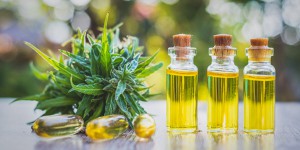By Javier Pedraza

Javier Pedraza Valiente was born in 1978. He graduated in medicine and surgery from the University of Extremadura in 2002, and in 2006 specialized in family and community medicine. Since 1998, he has had a particular interest in the clinical potential of the endocannabinoid system and began to educate himself in the subject.
He became a member of the Sociedad Española de Investigación sobre Cannabinoides (SEIC) in 2002 and of the International Association for Cannabinoid Medicines (IACM) in 2003.
He has worked as the editor of the medicinal section of the magazine "Cáñamo" and has directed the therapeutic offices of the Federations of Cannabis Associations of Extremadura, Catalonia and Madrid (FACEX, FEDCAC and MADFAC).
He was the vice-president of the Observatorio Español de Cannabis Medicinal (OECM). He is now the Observatorio's spokesperson and sits on its board of directors. He is currently the President of the Sociedad Iberoamericana de Medicina Cannábica (SIBEMEC).
If there is one area of medical practice with cannabinoids that raises most doubts for both clinicians and patients and their families, it must the whole issue of dosage.
The amount to be given of any drug is normally calculated on the basis of the patient's weight. The following factors are generally taking into consideration to calculate the actual dose:
- In the case of children in paediatric age, the maximum or minimum quantity (normally expressed in milligrams) to be administered per kilo of body weight, either in each individual dose (mg/kg/dose) or over a 24-hour period (mg/kg/day);
- In the case of adults, the standardised dose for a patient weighing 70 kg (this may vary slightly depending on the individual's real weight or the dosage schedule – e.g. ibuprofen can be administered in doses of 400 mg every 8h or 600 mg every 12h, giving a total daily dose in both cases of 1200 mg)
For example, an individual dose of paracetamol for a child varies ranges from 10 to 15 mg/kg up to a stipulated maximum of 80 mg/kg/day. In this case, 10 mg/kg is the minimum individual dose; 15 mg/kg (20 mg/kg according to some protocols) is the maximum individual dose and 80 mg/kg is the maximum daily dose, i.e. the most that can be administered to a child in a 24-hour period. For adults, individual doses of 500 mg were common until recently, although for some years now, 1000 mg (1 gram) of paracetamol has become the norm, with a maximum daily dose of 4 g.
All of these parameters, which are in common use in medicine, have been established on the basis of long years of pharmacological investigation and an equally long period of clinical practice. The same system applies to the great majority of pharmaceuticals in use today: the doses used will depend on the individual's weight in the case of children, and a standardised dose in the case of adults.
However, none of this applies when using cannabis for medicinal purposes. I would therefore like to share a few pointers that may help readers understand the complexity of standardised dosing in the case of cannabis.
Dosage for THC as the sole active agent is not the same as for cannabis
Since the first trials with THC were performed on humans, the great majority of studies carried out, using perfectly quantified doses of cannabinoids, have involved isolated THC. The pharmaceutical formulation of the isolated THC molecule is called Dronabinol and it is marketed as Marinol®. In terms of its effectiveness, the results of studies with this drug have been somewhat disappointing. Moreover, it has shown to have considerable side effects, especially at a psychological level; this is logical, since THC is better tolerated when it is accompanied by other cannabinoids than when used in monotherapy as a single molecule. The initial doses used in these studies generally range from 2.5 mg to 10 mg (sometimes up to 20 mg) of THC per dose, depending on the research objective. The 2.5 mg dose is normally used among elderly people and children – although surprisingly, children have a greater tolerance to the psychoactive effects of cannabis than adults. This can be explained by the lower density of CB1 receptors in immature brains as compared to adult brains (Franjo Grothemner).
However, the situation in real clinical practice is quite different; Marinol® (THC) is used in minute proportions when compared to its herbal form, Sativex®, or edible cannabis.
For the same reasons, Nabilone, (trade name Cesamet®), a synthetic derivative which is 10 times more potent than THC, is now far more rarely used than other more available, affordable and above all more effective sources of cannabinoids.
Dosage of the only pharmaceutical-grade medicine extracted from the plant varies greatly
After Marinol and Cesamet, we find Sativex®, a sublingual spray. Each spray delivers a dose of 2.7 mg of THC with 2.5 mg of CBD into the oral mucous membrane. The average dose in clinical trials with multiple sclerosis patients is eight sprays (puffs) per day (21.6 mg of THC and 20 mg of CBD per day). However doses of over 12 sprays per day (32.4 mg of THC and 30 mg of CBD per day) are not advisable. Although it is recommended that the product be applied in two doses (one in the morning and another at night), according to the tables on the Spanish Agency of Medications and Health Products's website, the doses are never the same, with a higher dose always being administered at night than in the morning. Bearing in mind that THC has a different rate of bioavailablility to CBD, one must conclude that in pharmacological terms, Sativex is not comparable to other commonly-used medicines.
To give an example of the different bioavailability rates of THC and CBD, some children with pharmacoresistant forms of epilepsy manage to maintain sufficient levels of CBD in their blood to control symptoms for 24 hours with just one dose per day. In the case of THC, however, in order to achieve the same degree of symptom control, cancer patients require two doses per day of capsules developed in Israel containing a formulation that turns THC into a "prolonged-release" drug.
Cannabis is not one single molecule, but many
Medicinal cannabis is a substance with a multi-faceted therapeutic potential, because different combinations of cannabinoids and terpenoids create products that are more suitable for one pathology or another. Thus some varieties are ideal for treating problems of insomnia or anxiety, while others have a powerful euphoriant and anti-depressant effect. This variability of effects is not solely due to the different combination of cannabinoids; it also depends on how the cannabinoids are combined with the different terpenoids in each variety. Given all these possible combinations of cannabinoids and terpenoids, medicinal cannabis should not be seen as a single type of "medicine", like paracetamol.
Herein lies the main problem of cannabis dosage..... 5 mg of THC administered using a pure Sativa variety with a high concentration of the terpenoid limonene, will never have the same effects as 5 mg of THC administered using a pure Indica variety with a high concentration of pinene. As a result, cannabis cannot be dosed like other pharmaceuticals. To make matters even more complicated, it is also important to take into account the genetic variability of each individual patient; the same 5 mg of any variety will have different effects in two different individuals, even if the product is exactly the same.
There is only one way of resolving all these obstacles that arise when determining cannabis dosage.
Individualisation of Treatment
Individualised treatment means giving each patient the dose that best matches their complaint and which will depend on the individual (prior experience with cannabis, any concomitant medication they may be taking, type of metabolizer for THC...), product used (proportion of THC and CBD, terpenoid content, ratio of Sativa to Indica, etc.) and the route of administration (oral, sublingual, spray, etc.).
However, the protocol for determining the right dose for each individual will always be the same: start with a low dose and progressively increase it until you find the dose that improves the individual's symptoms while not intensifying the side effects to such an extent that they limit therapeutic adherence to treatment – in other words, the dose that offers the most efficient balance between improvement of symptoms and intensity of side effects. It is important to spend enough time on striking this balance. If the dose is increased too quickly, it may cause side effects that will lead the patient to reject treatment. On the other hand, if it is increased too slowly, the patient may be put off the treatment because of its apparent ineffectiveness.
To sum up, treatment with cannabis will always require individualised dosage for each patient. Treatment should start with a low dose and be increased progressively and at a suitable pace until the optimum dose for each particular individual is found. This will consist of striking a balance between improvement in symptoms and the patient's tolerance to side effects. It will also depend to a significant extent on both the type of product and the route of administration.


